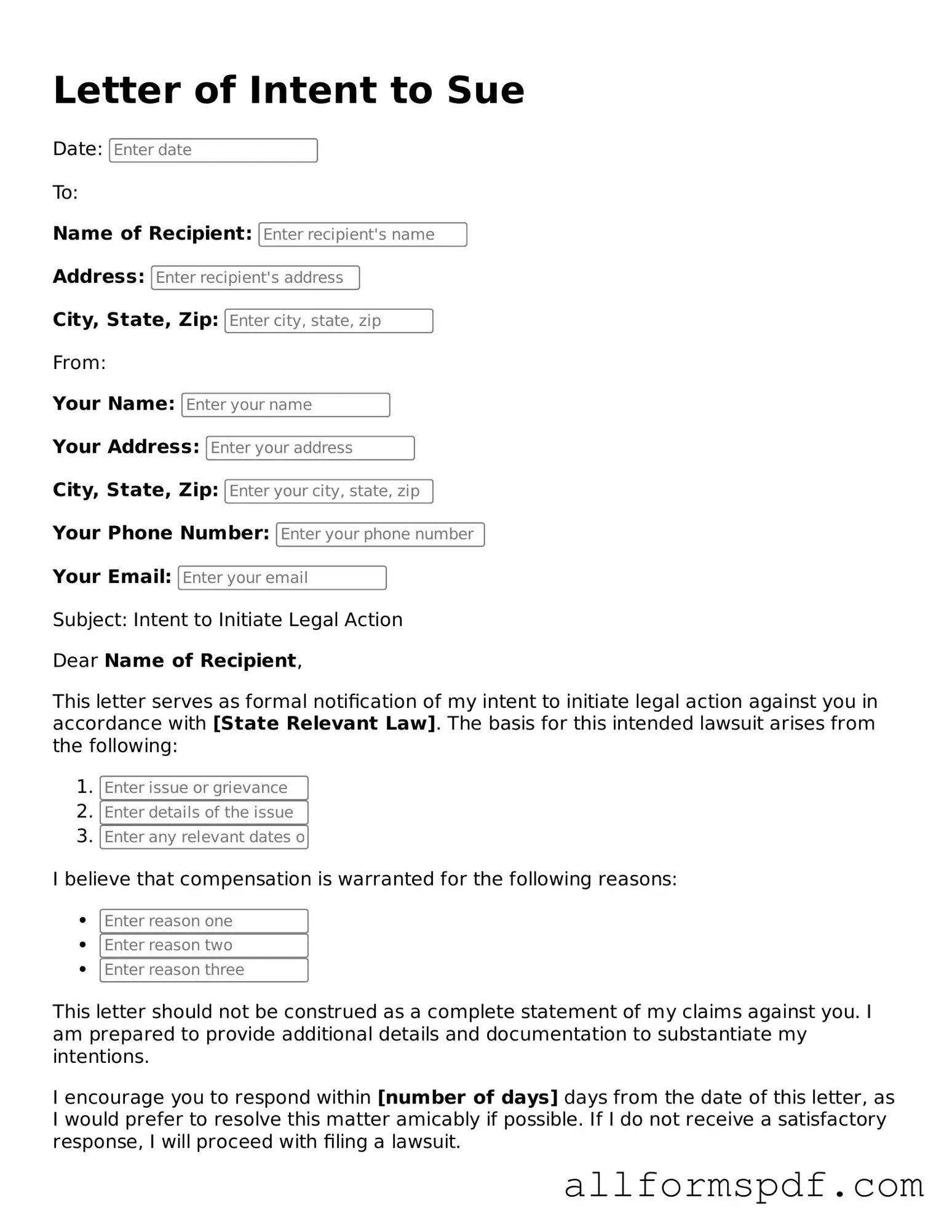Filling out a Letter of Intent to Sue form can be a crucial step in addressing legal disputes. However, many people make common mistakes that can jeopardize their claims. Understanding these pitfalls is essential for a successful submission.
One frequent error is failing to provide complete information. Omitting essential details, such as the names of the parties involved or the nature of the dispute, can lead to delays or even dismissal of the claim. Ensure that all relevant information is included and double-check for accuracy.
Another mistake is using vague language. Clear and precise wording is vital. Statements that are ambiguous or overly general can create confusion and weaken your position. Instead, be specific about the issues at hand and the desired outcomes.
Many individuals neglect to include supporting documentation. Evidence such as contracts, correspondence, or photos can strengthen your case. Without these attachments, your claims may lack credibility. Always gather and attach relevant documents to bolster your argument.
People often underestimate the importance of proper formatting. A disorganized or poorly formatted letter can detract from your message. Use a clear structure, including headings and bullet points, to enhance readability and ensure your points stand out.
Some individuals fail to proofread their letters. Typos and grammatical errors can undermine your professionalism. Take the time to review your letter carefully, or consider asking someone else to read it for clarity and correctness.
Another common mistake is not adhering to submission guidelines. Each jurisdiction may have specific requirements for how and where to submit your Letter of Intent. Be sure to research these rules and follow them closely to avoid unnecessary complications.
Lastly, many people overlook the importance of a timely submission. Delays can lead to missed deadlines, which can severely impact your case. Act promptly and ensure that your letter is sent within the required timeframe.
By avoiding these common mistakes, you can enhance the effectiveness of your Letter of Intent to Sue. Take the time to prepare thoroughly, and ensure that your claims are presented clearly and professionally.
